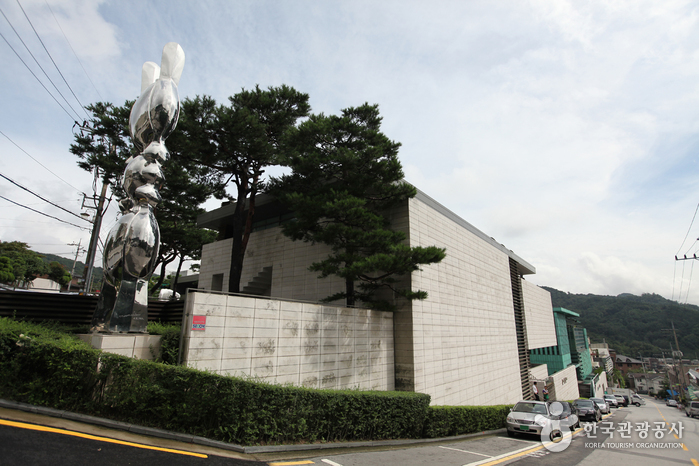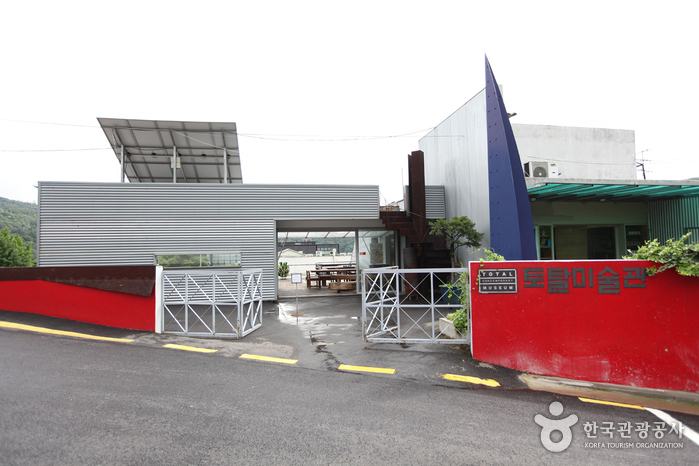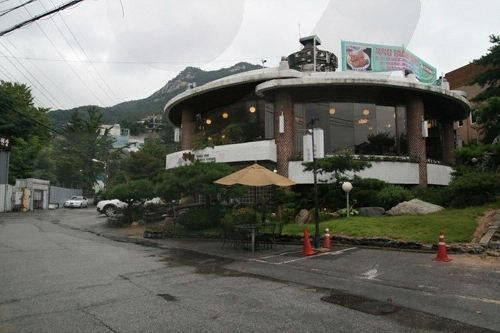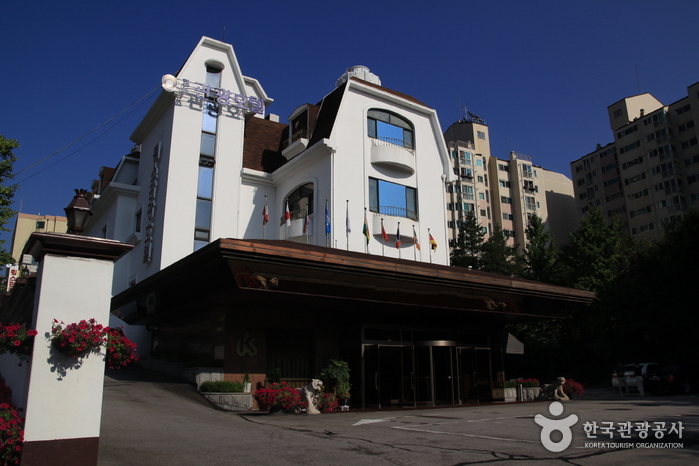Roem - NC Bulgwang Branch [Tax Refund Shop] (로엠 NC불광)
3.5Km 2024-07-01
20, Bulgwang-ro, Eunpyeong-gu, Seoul
-
Gana Art Center (가나아트센터)
3.8Km 2024-03-18
28 Pyeongchang 30-gil, Jongno-gu, Seoul
The Gana Art Center located at the foothills of Bukhansan Mountain has been showcasing more than 300 exhibitions since its opening in 1983. Through both national and international exhibitions, the Gana Art Center is a recognized gellery. With numerous fairs and exhibitions, Gana Art Center not only invite internationally known artists, but also promotes other forms of art, such as music, theater, mime, etc. Through their flexibility in promoting all art forms, the visitors will surely be able to find the theme of their interest.
Total Museum (토탈미술관)
3.9Km 2022-07-22
8, Pyeongchang 32-gil, Jongno-gu, Seoul
+82-2-379-7037
The Total Museum is a branch of Jangheung Art Park (formerly “Total Outdoor Museum”) that opened near Bukhansan Mountain in April 1992. It houses facilities such as an art academy, library, art shop, and outdoor performance stage. In addition to exhibitions, the museum holds a variety of art and culture programs like musical concerts, events, lectures, and seminars. In particular, the members-only educational programs and gallery concerts provide a chance to enjoy high-quality cultural events.
Daepyeong Galbi (대평갈비)
4.0Km 2021-03-27
83, Pyeongchangmunhwa-ro, Jongno-gu, Seoul
+82-2-395-5288
With a large hall, it is a good place for group gatherings and group dinners. This Korean dishes restaurant is located in Jongno-gu, Seoul. The representative menu is grilled jumbo sized beef ribs/grilled jumbo sized spareribs.
Bugakjeong Isang Galbi (북악정(이상갈비))
4.0Km 2020-04-28
6, Pyeongchang 36-gil, Jongno-gu, Seoul
+82-2-394-2340
Bugakjeong Isang Galbi is an oasis located in the middle of the city. The restaurant has been known for its marinated galbi (served with a wide variety of side dishes) since the beginning of its impressive history of over 30 years. For the comfort of its diners, the grounds also include a free lounge.
Donghwa Kim's Hotel (동화킴스관광호텔)
4.1Km 2021-01-19
136, Pyeongchangmunhwa-ro, Jongno-gu, Seoul
+82-2-379-0520
Donghwa Kim's Hotel, located in Jongno-gu, Pyeongchang-dong, was designed to give the impression of a mountain cabin while combining Korean and modern architectural elements, resulting in a structure of notable artistic taste. The four-story hotel has 51 comfortable guestrooms, a banquet hall, a coffee shop, a Western restaurant, and a Korean restaurant. The hotel offers a wide-open view of the neighboring Bugaksan Mountain.
Uniqlo - Eunpyeong Branch [Tax Refund Shop] (유니클로 은평)
4.2Km 2024-04-16
32, Seooreung-ro, Eunpyeong-gu, Seoul
-
Goyang West Five Royal Tombs [UNESCO World Heritage] (고양 서오릉 [유네스코 세계문화유산])
4.4Km 2024-02-19
334-32 Seooreung-ro, Deogyang-gu, Goyang-si, Gyeonggi-do
+82-2-359-0090
Goyang West Five Royal Tombs is an important historical site comprising a cluster of five royal tombs from the Joseon dynasty, located in the western region. This significant group include the tombs of Crown Prince Uigyeong (1438-1457), the eldest son of King Sejo, at Gyeongneung; King Yejong at Changneung; Crown Prince Sunhui at Sunchangwon; Queen Ingyeong at Ingneung; King Sukjong at Myeongneung; and Queen Jeongseong at Hongneung. Touring these sites typically takes about an hour. Additionally, there's a walking trail behind Ingneung, allowing visitors to enjoy the surrounding forest in spring and summer, as well as the vibrant maple trees in autumn.
Seokparang (석파랑)
4.4Km 2024-09-02
309 Jahamun-ro, Jongno-gu, Seoul
+82-2-395-2500
Seokparang is a place built by relocating the Sarangchae of Heungseon Daewongun, the father of King Gojong of the Joseon dynasty. It boasts beautiful late Joseon-style gardens and three traditional hanok buildings. Here, one can enjoy authentic Gungjung hanjeongsik (royal Korean table d'hote) for both lunch and dinner, featuring meticulously prepared dishes such as traditional porridge, chilled salads, steamed prawns, kimchi cabbage wraps with pork, soybean paste jjigae set menu, and desserts. Diners can also savor traditional liquors crafted by artisans from across the country.
LG Best Shop - Eunpyeong Branch [Tax Refund Shop] (엘지베스트샵 은평점)
4.5Km 2024-04-18
153, Eunpyeong-ro, Eunpyeong-gu, Seoul
-
![Roem - NC Bulgwang Branch [Tax Refund Shop] (로엠 NC불광)](http://tong.visitkorea.or.kr/cms/resource/19/3314719_image2_1.jpg)





![Uniqlo - Eunpyeong Branch [Tax Refund Shop] (유니클로 은평)](http://tong.visitkorea.or.kr/cms/resource/81/2889381_image2_1.jpg)
![Goyang West Five Royal Tombs [UNESCO World Heritage] (고양 서오릉 [유네스코 세계문화유산])](http://tong.visitkorea.or.kr/cms/resource/88/1589188_image2_1.jpg)

![LG Best Shop - Eunpyeong Branch [Tax Refund Shop] (엘지베스트샵 은평점)](http://tong.visitkorea.or.kr/cms/resource/76/2890276_image2_1.jpg)
 English
English
 한국어
한국어 日本語
日本語 中文(简体)
中文(简体) Deutsch
Deutsch Français
Français Español
Español Русский
Русский